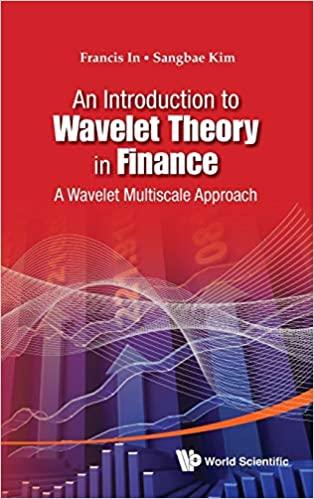Question
APPROVED FORMULAS Time Value: FV = PV (FVFk,n) FVOA = PMT (FVFOAk,n) PV = FV (PVFk,n) PVOA = PMT (PVFOAk,n) Bond Valuation : V =
APPROVED FORMULAS
Time Value:
FV = PV (FVFk,n)
FVOA = PMT (FVFOAk,n)
PV = FV (PVFk,n)
PVOA = PMT (PVFOAk,n)
Bond Valuation:
V = (INT x PVFOA) + (M x PVF) Gallagher text, pg. 320, formula 12-3
OR
B = I(PVIFA r,n) + M(PVIFr,n)
Rate of Return one year:
r = Pt Pt-1 + C
Pt-1
CAPM:
K = Krf+ (Km- Krf)
Gallagher formula pg 156, formula 7-6 (moving beta, , before parenthesis)
OR
r = Rf +(rm Rf)
NOTE: Krf is the risk free rate 90 day T-Bills) and is the same as Rf
Portfolio Beta
p = (w1 x 1) + (w2 x 2) (wj x j)
Gordon Model for Stock Valuation:
P = D1/(rs g)
10. Looking at a list of beta coefficients you spot a number of stocks as possible buys for your new stock portfolio. You have $80,000 to invest. You have decided to have just three stocks in your portfolio (this will make it easier to follow than a portfolio of more stocks). You have selected two already:
The Gap with a beta of 1.31 and Disney with a beta of 1.25. You have invested $20,000 in each. For the final selection you are looking at Ford with a beta of 2.72, eBay with a beta of 1.75, IBM with a beta of 0.68 and the parent of Anheuser-Busch with a beta of 1.00. You would like the overall beta of your portfolio to be as close to "the market" or "average stock" as possible.
Make your selection for your third stock and calculate the beta of your three-stock portfolio (and yes, I need to see all the work).
Step by Step Solution
There are 3 Steps involved in it
Step: 1

Get Instant Access to Expert-Tailored Solutions
See step-by-step solutions with expert insights and AI powered tools for academic success
Step: 2

Step: 3

Ace Your Homework with AI
Get the answers you need in no time with our AI-driven, step-by-step assistance
Get Started


